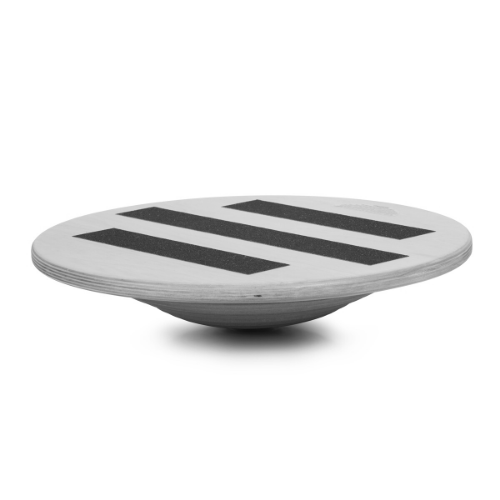Balance is a key part of human function and the ability to perform daily tasks. Devices to challenge and train improvements in balance are a critical part of physiotherapy practice.
The modern balance board owes its existence to US World War II pilot Stanley Washburn Jr. In his time flying supply planes he came across children on Africa’s Gold Coast playing with a plank over a small log. Upon returning home, Washburn created his own version in his wood shop as a gift for his daughter. The Bongo Board was board in 1952 and became a popular toy. By the 1960s users of the board had become more diverse. Skiers and other athletes adopted the device to help with balance training.
J. A. Moncur in 1977 published on variable height wobble boards which had been in use for “many years” in the British Journal of Sports Medicine. The board used was actually a modified cake board, and this may be the basis of the circular shape of the modern wobble board.
The use of a wobble board, with its unstable semi-spherical base, added a second dimension (forwards/backwards) to the balance board. In 1983 R. Lindenschmidt used a wobble board to assess the effects of alcohol on balance function and the inclusion of wobble boards as a means to measure psychomotor performance in the medical literature started around this time period. A. K. Burton in 1986 published – Trunk muscle activity induced by three sizes of wobble (balance) boards. It was an early publication on the use wobble boards to address trunk stability, that recognised that the use of wobble boards to address proprioceptive impairments following ankle injury was already well established.
Description provided by Cameron MacDonald of the USA

